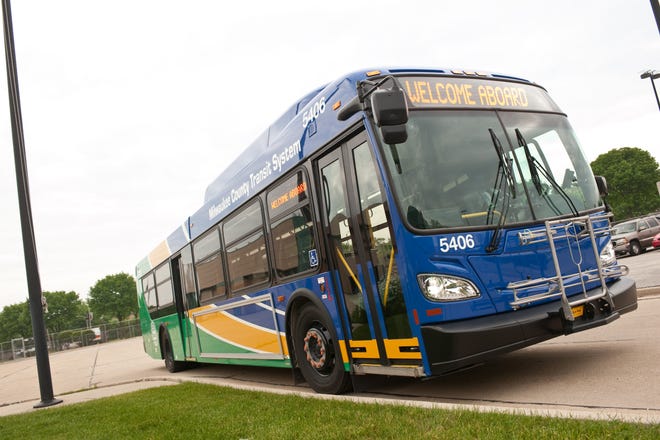Federal aid boosts transit budgets in near term, but structural challenges remain
April 26, 2021
Federal relief funds are providing a temporary life raft to Wisconsin transit systems amid the plunging ridership of the COVID-19 pandemic, likely allowing most to maintain existing services for at least the next two years.
Yet the long-term picture for these crucial systems remains very murky. Factors clouding their future outlook include pre-pandemic ridership declines, stagnant revenues from state and other funding sources, increasing reliance on limited local revenues, and uncertainty about post-pandemic ridership levels.
The good news is that hundreds of millions of dollars in federal aid is helping avert what otherwise might have been a worst-case scenario for transit systems in 2021.
A recent Forum analysis focused on transit systems in Milwaukee, Madison, Appleton, Janesville, Wausau, and Stevens Point, with less comprehensive analysis of systems in Green Bay, Ozaukee County, Waukesha, and Ashland.
Federal COVID-19 relief funds, primarily from the Coronavirus Aid, Relief, and Economic Security (CARES) Act, have been instrumental in preserving transit services across Wisconsin since the pandemic emerged. Additional relief is on the way via the American Rescue Plan Act (ARPA) approved in March. In addition to helping maintain fixed-route bus services in the near term, these dollars may allow some systems to invest in new buses in a way that will ease pressure on both operating and capital budgets for several years to come.
Still, these funds may turn out to be a double-edged sword — particularly for those systems that saw sizable amounts of local property tax funding removed from their budgets as federal dollars flowed in to replace them. CARES funds comprise more than 10% of operating revenues for five of the six systems in 2021 budgets, which means large holes will be created when those and newer sources of federal relief are exhausted.
Other challenges facing these systems are considerable, and in many cases stem from factors predating the pandemic. Five of the six systems studied in the report saw ridership declines from 2010 to 2019, with three experiencing declines of more than 15%. In several cases, these declines brought corresponding reductions in farebox revenues, a key funding source for these systems.
As farebox revenues have declined and state and pre-pandemic federal revenues remained flat, these systems have increasingly turned to local governments to maintain their operating and capital needs. These local governments face many of their own fiscal pressures, potentially limiting their ability to provide further assistance to their local transit systems.
Looking to the middle of the coming decade, federal relief funds will no longer be available to help balance transit budgets (though it is possible that a new federal infrastructure bill — if adopted — will provide additional support). The need to replace those funds and offset losses of farebox revenues if ridership should fail to fully rebound may be prohibitive for some systems.
This information is provided to Wisconsin Newspaper Association members as a service of the Wisconsin Policy Forum, the state’s leading resource for nonpartisan state and local government research and civic education. Learn more at wispolicyforum.org.













